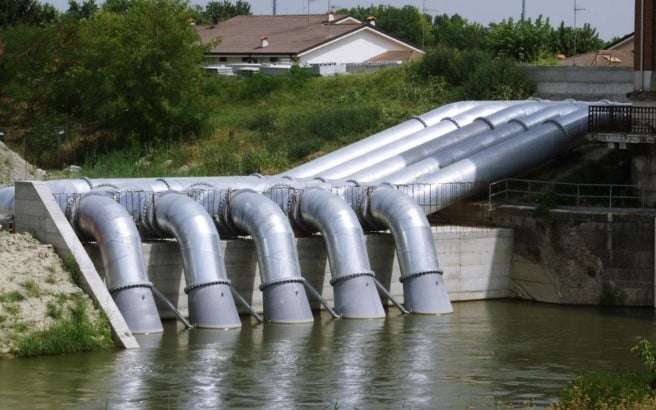Floods are natural phenomena that can wreak havoc on communities, causing immense damage to property and endangering lives. In regions prone to flooding, the implementation of flood mitigation services is highly recommend. Understanding the intricacies of these services is paramount for safeguarding against the adverse effects of floods.
I. Understanding Flood Mitigation Services
A. Definition and Importance
Flood mitigation services encompass a range of measures aimed at reducing the risk and impact of flooding on communities. These services are essential for mitigating the devastating consequences of floods, which can include structural damage, displacement of residents, and disruption of essential services. By employing proactive strategies, communities can minimize the vulnerabilities associated with flooding and enhance their resilience in the face of natural disasters.
B. Types of Flood Mitigation Services
- Structural Measures
Structural measures involve the construction of physical barriers and infrastructure to mitigate the effects of flooding. This includes the erection of flood barriers, levees, and embankments to contain rising waters and prevent inundation of critical areas. Additionally, the installation of floodgates and pumping stations can help regulate water levels and mitigate the risk of inundation during periods of heavy rainfall or storm surges. - Non-Structural Measures
Non-structural measures focus on land use planning, environmental management, and community outreach to minimize the impact of flooding. This includes the implementation of urban planning and zoning regulations to restrict development in flood-prone areas and promote sustainable land use practices. Furthermore, the restoration and preservation of wetlands serve as natural buffers against flooding, absorbing excess water and reducing the severity of downstream flooding events. Public awareness campaigns and education programs also play a crucial role in promoting flood preparedness and fostering community resilience.
C. Role of Technology in Flood Mitigation
Advancements in technology have revolutionized flood mitigation efforts, enabling more accurate forecasting, early warning systems, and real-time monitoring of flood events. Remote sensing techniques, geographic information systems (GIS), and flood modeling software allow authorities to assess flood risks, identify vulnerable areas, and develop targeted mitigation strategies. Additionally, the integration of sensor networks and telemetry systems facilitates the collection of hydrological data, enabling timely responses to changing flood conditions and improving emergency preparedness.
II. Strategies for Effective Flood Mitigation
A. Structural Measures
- Construction of Flood Barriers
Flood barriers, such as levees and flood walls, are engineered structures designed to contain floodwaters and protect communities from inundation. These barriers are constructed using a variety of materials, including concrete, steel, and earthen embankments, depending on the specific requirements of the site. Proper design and maintenance of flood barriers are essential to ensure their effectiveness in mitigating flood risks and safeguarding against structural failure. - Installation of Floodgates
Floodgates are hydraulic control structures installed in drainage systems, canals, and flood channels to regulate the flow of water during flood events. By strategically opening or closing floodgates, authorities can manage water levels and prevent flooding in low-lying areas. Modern floodgate systems incorporate automated sensors and actuators to enable remote operation and real-time monitoring, enhancing their efficiency and responsiveness in flood mitigation efforts. - Building Resilient Infrastructure
Resilient infrastructure design involves incorporating flood-resistant materials, elevation techniques, and drainage systems into building and infrastructure projects. Elevated foundations, waterproofing membranes, and flood-resistant building materials help minimize water damage and reduce the need for costly repairs in the aftermath of floods. Additionally, green infrastructure solutions, such as rain gardens and permeable pavement, can mitigate stormwater runoff and alleviate pressure on conventional drainage systems, thereby reducing the risk of flooding in urban areas.
B. Non-Structural Measures
- Urban Planning and Zoning Regulations
Effective urban planning and zoning regulations are essential for controlling land use and development in flood-prone areas. By delineating flood hazard zones, implementing setback requirements, and establishing building codes, authorities can minimize exposure to flood risks and protect vulnerable communities from harm. Smart growth principles, such as compact development and mixed land use, can further enhance flood resilience by reducing impervious surfaces and promoting sustainable development practices. - Wetland Restoration and Management
Wetlands play a crucial role in flood mitigation by acting as natural sponges that absorb excess water and attenuate flood flows. Wetland restoration and management initiatives aim to preserve and enhance these valuable ecosystems, thereby reducing the severity of flooding events and protecting downstream communities from inundation. By restoring degraded wetlands, controlling invasive species, and implementing habitat enhancement measures, authorities can bolster the flood resilience of watersheds and promote ecological diversity. - Public Awareness and Education Programs
Public awareness and education programs are instrumental in fostering a culture of flood preparedness and resilience within communities. These programs provide valuable information on flood risks, emergency response procedures, and mitigation measures, empowering residents to take proactive steps to protect themselves and their properties. Outreach efforts, such as community workshops, educational materials, and social media campaigns, help raise awareness about flood hazards and encourage residents to implement mitigation measures, such as elevating structures, securing valuables, and purchasing flood insurance.
III. Benefits of Implementing Flood Mitigation Services
A. Economic Advantages
The implementation of flood mitigation services offers numerous economic benefits, including reduced property damage, lower insurance premiums, and enhanced property values. By investing in resilient infrastructure and proactive flood risk management, communities can minimize the financial burden associated with flood-related losses and disruptions. Moreover, the cost-effectiveness of flood mitigation measures is often far greater than the expense of post-disaster recovery and reconstruction efforts, making them a wise investment in long-term economic stability and prosperity.
B. Environmental Benefits
Flood mitigation services contribute to environmental conservation and sustainability by preserving natural habitats, reducing habitat fragmentation, and protecting water quality. Wetland restoration projects, in particular, provide valuable ecosystem services, such as flood control, water filtration, and wildlife habitat, which support biodiversity and enhance ecological resilience. By safeguarding natural resources and promoting sustainable land use practices, flood mitigation efforts help maintain the integrity of ecosystems and mitigate the impacts of climate change on vulnerable species and habitats.
C. Social Impacts and Community Resilience
Perhaps most importantly, the implementation of flood mitigation services enhances community resilience and fosters social cohesion in the face of adversity. By reducing the risk of flood-related casualties, injuries, and displacement, these services help protect the health, safety, and well-being of residents. Furthermore, by promoting inclusive planning processes and equitable access to resources, flood mitigation efforts strengthen social bonds and empower marginalized communities to actively participate in decision-making and disaster preparedness initiatives. Ultimately, investing in flood mitigation services not only saves lives and protects property but also builds stronger, more resilient communities capable of weathering the storms of the future.







Leave a Reply